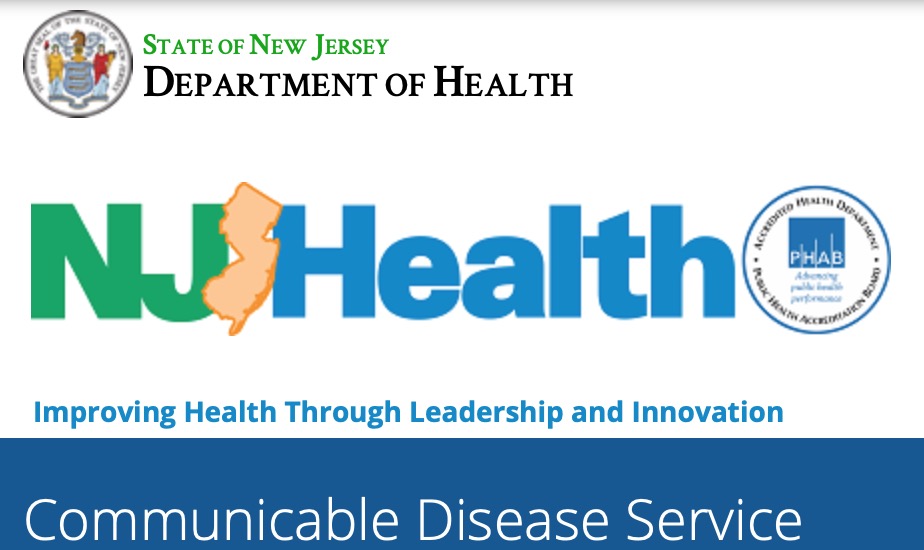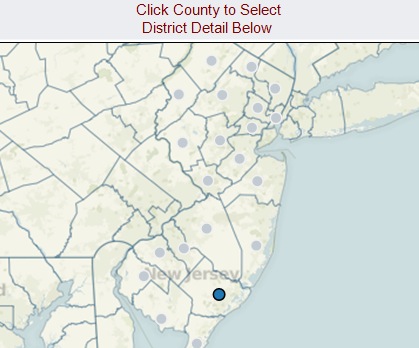NJ Bag Ban starts May 4 - what you need to know.
Cómo hablar con un oficial del Departmento de Salud de New Jersey sobre el virus Covid-19
Cómo hablar con un oficial del Departmento de Salud de New Jersey sobre el virus Covid-19 #p2
Días de enfermedad pagados han llegado a New Jersey

A partir del 29 de octubre 2018, casi todos los trabajadores de Nueva Jersey tendrán derecho a ganar días de enfermedad pagados.
• Usted acumula horas de permiso de ausencia laboral debido a enfermedad a una tasa de 1 hora por cada 30 horas trabajadas, hasta un máximo de 40 horas de permiso por año calendario.
-Usted comienza a acumular días de permiso de ausencia laboral debido a enfermedad a partir del 29 de octubre de 2018 o de su primer día de empleo, lo que ocurra más tarde.
• Usted puede usar la ley para tomarse un tiempo libre en el trabajo para una visita al médico, para recuperarse de una enfermedad física o mental (para usted o un miembro de su familia), recuperarse de la violencia doméstica o sexual, para asistir a una conferencia de padres y maestros, o si se está cerrando una escuela o lugar de trabajo debido a una emergencia de salud pública.
• Los empleadores también deben publicar este aviso en un lugar visible y accesible en todos los sitios de trabajo.
Aprenda más visitando a la página web del Departamento de Labor en New Jersey
Vote YES on NJ Ballot Q#2 to protect gas tax funds from being raided like clean energy and health funds were

New Jersey Assemblyman Dr. Tim Eustace wants New Jersey voters to know that voting YES on Ballot Question #2 will enable extremely important protections of taxpayer dollars. Election Day this year falls on Tuesday, November 8.
Here are short and long versions of the reasons it’s important to vote YES to Q2. You already know how important it is that you go vote in the first place – right?
The short version of why YES on Q2
On the gas tax issue, Assm. Eustace comments:
The New Jersey gas tax increase of 23¢ is law – and it’s a mistake to think it will go away if people vote NO on Ballot Question #2 at the polls next Tuesday. Gov. Christie’s second-in-command discussed the ballot question in a 101.5 Radio interview, revealing that either she does not understand this law, or maybe Ms. Guadagno is hoping to draw out Republican voters who believe that the gas tax will go away if they vote no. But, this is not true.
It’s essential that gas tax money be used only for transportation and that this money not become accessible to the governor for use in the general budget. Gov. Christie used over $1.2 billion from the State’s Clean Energy Fund to plug general budget holes. In order to ensure that gas tax money can only be used for transportation expenditures, vote YES to Ballot Question #2 on Election Day.”
Dr. Eustace is the NJ Assembly Environment Committee Chair.
An NJ.com editorial echoes the assemblyman’s message:
…experts attest that if all that if annual gas tax revenue were dedicated exclusively to transportation projects, we could have filled a few more potholes by now … if (taxpayers) are tired of seeing large sums ($35 million last year, higher in previous years) scraped from the gas tax for purposes other than transportation, they can do something about it on Election Day.
Now that the gas tax increase is something we’ve all got to live with, we support Ballot Question 2, a constitutional amendment that dedicates every penny of that revenue to the Transportation Trust Fund.
That means the government can no longer raid the TTF to plug other budget holes – a lockbox provision that 30 other states already have.
Road to Repair offers a short but complete statement on why a YES vote to Q2 is so important:

The long version of why YES on Q2
On Facebook, Aaron Hyndman addressed this issue with a thorough analysis of the New Jersey gas tax ballot issue, “TO ANYONE STILL ON THE FENCE ABOUT NJ BALLOT QUESTION #2.” Hyndman is Communications Coordinator at the NJ Bike & Walk Coalition and the following is his statement:
I finally have a spare moment to contribute some thoughts regarding Ballot Question 2, so here are some things that I hope everyone will take into consideration:
First of all, there is a great deal of misinformation being spread by the Lt. Gov. and other interests that are opposed to the ballot question for reasons that are more self-serving and not purely altruistic. Too much is being said ABOUT the ballot question instead of discussing what is ACTUALLY in the ballot question, which reads as follows:
“
Do you approve amending the Constitution to dedicate all revenue from the State motor fuels tax and petroleum products gross receipts tax to the Transportation Trust Fund?
Listed: Christie’s dismal record of caring for New Jersey
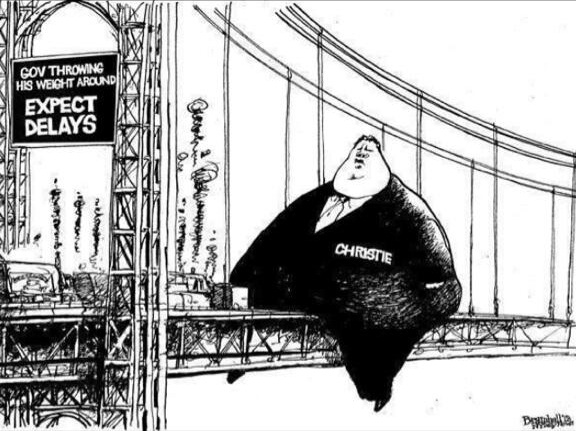 It isn’t just the George Washington Bridge that Christie has obstructed in his home state. Here’s an excellent list from One New Jersey showing many of the ways Gov. Chris Christie has failed to do his job. Sections include:
It isn’t just the George Washington Bridge that Christie has obstructed in his home state. Here’s an excellent list from One New Jersey showing many of the ways Gov. Chris Christie has failed to do his job. Sections include:
- Jobs Lost – NJ Falling Behind
- New Jersey Families Falling Behind Crumbling Infrastructure & Rising Costs
- Abusing Taxpayer Money
- Taxpayer-Funded Corporate Bailouts
- And No Job Gains Budget Mismanagement: Costing NJ Taxpayers
New federal sign regulations drive change on the Garden State Parkway
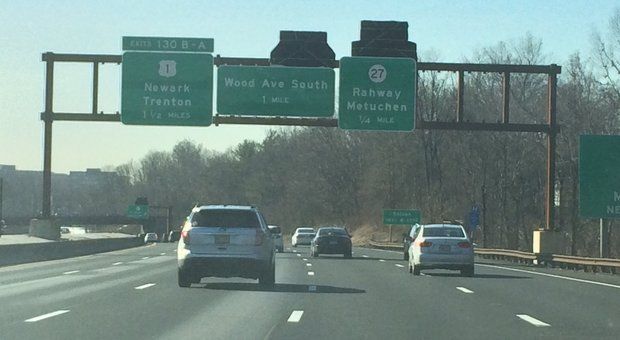
On the GSP, New Exit 41 opens in Atlantic City area today to provide direct access to Jimmie Leeds Road. Until now, Motorists have accessed the road by driving through the AC service area.
And in a few days, Woodbridge area drivers in the low 130s will get a bit of an exit shuffle on either side of the highway. NJ.com’s @LarryHiggs explains:
What’s changing? On the northbound parkway, Exit 131 will become Exit 132, Feeney said. On the southbound parkway, Exit 131 will become Exit 132 and Exit 131A will become Exit 131, Feeney said.
Southbound drivers also will have to get used to a new sign and a new sign color. The destination on the overhead sign for the new Exit 131 will change from “Metropark” to “Wood Avenue South.” The sign color will change from blue to the tradition exit sign green, he said.
New Jersey County Clerks
| Atlantic County Clerk 5901 Main Street CN 2005 Mays Landing, NJ 08330 609-641-7867 |
Bergen County Clerk One Bergen County Plaza Hackensack, NJ 07601 201-336-7000 |
Burlington County Clerk 49 Rancocas Road Mount Holly, NJ 08060 609-265-5122 |
| Camden County Clerk 2015 The Mall at Voorhees Town Center, 2nd Floor Voorhees, NJ 08043 856-566-2920 |
Cape May County Clerk 7 North Main Street DN 109 Cape May Court House, NJ 08210-3096 609-465-1010 |
Cumberland County Clerk Court House Building 60 West Broad Street Bridgeton, NJ 08302 856-453-4860 |
| Essex County Clerk Hall of Records 465 Martin Luther King Blvd. Newark, NJ 07102 973-621-4920 |
Gloucester County Clerk Court House P.O. Box 129 Woodbury, NJ 08096 856-853-3237 |
Hudson County Clerk 257 Cornelison Avenue Jersey City, NJ 07302 201-369-3470 |
| Hunterdon County Clerk Hall of Records 71 Main Street Flemington, NJ 08822 908-788-1221 |
Mercer County Clerk 100 Court House Annex 209 South Broad Street, P.O. Box 8068 Trenton, NJ 08650 609-989-6477 |
Middlesex County Clerk P.O. Box 1110 New Brunswick, NJ08903-1110 732-745-3827 |
| Monmouth County Clerk 33 Mechanic Street Freehold, NJ 07728 732-431-7324 |
Morris County Clerk Administration & Records Building P.O. Box 315 Morristown, NJ 07963-0315 973-285-6125 |
Ocean County Clerk P.O. Box 2191 Toms River, NJ 08754 732-929-2110 |
| Passaic County Clerk 401 Grand Street, Room 130 Paterson, NJ 07505 973-225-3632 |
Salem County Clerk P.O. Box 18 92 Market Street Salem, NJ 08079 856-935-7510 |
Somerset County Clerk P.O. Box 3000 20 Grove Street Somerville, NJ 08876 908-231-7006 |
| Sussex County Clerk Sussex County Clerk’s Office 83 Spring Street, Suite 304 Newton, NJ 07860 973-579-0900 |
Union County Clerk 2 Broad Street Elizabeth, NJ 07207 908-527-4787 |
Warren County Clerk 413 Second Street Belvidere, NJ 07823 908-475-6211 |
Expanded student demographic data now on ELC website
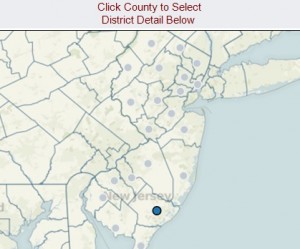 Over the years, Education Law Center (ELC) has become the “go-to” source where parents, policymakers and advocates can find high quality, in-depth data and other useable information on New Jersey’s public schools. This organization is committed to continuing to provide timely and relevant data in a highly functional and interactive format and is pleased to announce that visitors can now find an expanded range of student data on their website: racial/ethnic composition, poverty rates, limited English proficiency rates, and special education rates of NJ public school students, whether enrolled in district schools or charter schools.
Over the years, Education Law Center (ELC) has become the “go-to” source where parents, policymakers and advocates can find high quality, in-depth data and other useable information on New Jersey’s public schools. This organization is committed to continuing to provide timely and relevant data in a highly functional and interactive format and is pleased to announce that visitors can now find an expanded range of student data on their website: racial/ethnic composition, poverty rates, limited English proficiency rates, and special education rates of NJ public school students, whether enrolled in district schools or charter schools.
A visitor to the “Data & Research” page on the ELC site will see highly interactive charts and maps displaying student enrollment data by race/ethnicity for school districts across the state. Below that, a second data set displays enrollment in special programs. Interactive elements are in red.
The maps permit a quick scan of the current statewide landscape and identify spatial patterns. Bar charts, organized by District Factor Group (DFG; the classification system used by the New Jersey Department of Education to organize districts by socioeconomic status), illustrate how dramatically student characteristics differ by district type. Data can also be filtered by county, and charts can be sorted in multiple ways (for example, by district or by a chosen indicator in ascending or descending order).
The ELC website also makes it easier to examine historical trends by providing two options for viewing data. The first option compares counties, districts or schools within the same year, with over a decade’s worth of data. Using the second option, a site visitor can choose state, county, district or school level data in order to view longitudinal trends. Using the tabs at the top of the display, it’s possible to toggle between views. Any selections made on one tab will carry over to a subsequent tab.
Telling the Story with Data
The map displaying NJ’s diverse student population illustrates the high degree of racial segregation across the state. The DFG chart can be used to filter the data to show the interplay of geography, socioeconomic status and racial segregation. Filtering the map to view only DFG “A“ districts, for example, it is clear that these districts with the lowest socioeconomic status are predominately located in the northeastern and southern portions of the state and serve large numbers of black and Hispanic children. Alternatively, DFG “J” districts – the wealthiest in the state – are almost exclusively found in the northern part of the state and are more likely to be majority white districts.
The second tab shows student enrollments by race/ethnicity for counties, districts and schools from 1999-2000 through 2011-2012. For example, the data show that in 2011-12, Bergen County student enrollment was the highest in the state (over 130,000 students), while Salem County enrollment was the lowest (less than 12,000 students). Scanning the chart also shows that Sussex County enrolled the largest proportion of white students (88%) and Essex County the smallest (27%). The racial distributions of students in districts and individual schools are available in this view.
In the second set of charts and maps, the data show that while the number of students classified as free and reduced lunch or Limited English Proficiency is related to a district’s socioeconomic status, special education is more evenly distributed across the state. The second tab displays the three indicators together, making it possible to explore how these student characteristics are related. The chart can be expanded so that district data within counties can be viewed and then further expanded to show the schools within districts.
The third tab shows longitudinal data illustrating, for example, the recent increase in student poverty. The number of English language learners and special education students, for the years in which data are available, is more stable.
“The beauty of these data sets is that they make it possible to access over a decade of demographic data in one place,” said Dr. Danielle Farrie, ELC’s Research Director. “The information is displayed in an easy to understand format that can be manipulated by visitors to ELC’s website in order to find the exact data they need, whether they are looking for state level trends or the particular characteristics of an individual school.”
Just how bad is Chris Christie?
Some people have spent time investigating Christie’s shadowy career. Here’s what they say:
Christie Declares War On the Poor
Christie’s War On The Poor
Written by William Colon, executive director of the Latino Institute, Inc. and a contributing writer for the Hall Institute of Public Policy.
“We had a ‘war on poverty’ once, and we lost it, and since poverty is still here, let’s eliminate the poor amongst us.”
This seems to be New Jersey’s prevailing public philosophy.
Last week, with a few strokes of the pen, the governor killed attempts by the state legislature to restore funds to various programs and initiatives that were designed to help the poor. The list is very long, and we will mention just a few.
Among the cuts are millions of dollars in tuition aid which were used by poor students to pay for college, women’s health services, legal services for the poor in Camden and Newark, and the New Jersey After 3 program, dedicated to the provision of after-school educational services in Newark and Paterson. The governor cut money to child care centers for urban children, adding new rules to make it virtually impossible for undocumented immigrants to have access to those services, and changed the rules for Medicaid so that working poor adults cannot earn more than the absurd amount of $105 a week if they want to be covered by health insurance.
He also eliminated funds for family planning services clinics and preventive health services for pregnant women. He ended funding for a program which assisted poor AIDS patients with their life-saving drugs, and eviscerated the funding for the assistance of the blind and visually impaired. He also cut funds for programs supporting frail and sick elderly.
And he shot directly at the heart of the Latino community, by eliminating the restoration of $2.3 million the state legislature had designated to support programs at the Center for Hispanic Policy, Research and Development (CHPRD).
Last year, the governor demonstrated what he thought about Hispanics and their needs, by eliminating in toto $8.5 million in programs that provide direct services to the Latino community. Now, going a step further, not only he took away the funds, but added odious and perverse rules so that our people are forced to live in abject poverty, or better, to move elsewhere.
To facilitate this nefarious and mean-spirited agenda, knowing that the majority of Latinos live in cities or urban centers like Newark, Jersey City, Passaic, Perth Amboy and Paterson, he also cut funds to these cities, impacting local property taxes (there are will be no property tax decreases in the foreseeable future), and therefore, impacting rents for poor tenants.
It is ironic that those cuts will also impact Latino mayors Awilda Diaz and Felix Roque, who had kissed and embraced Mr. Christie in the past. I wonder what they think now of the governor after he has limited their ability to carry on their pet projects.
It should be noted that while these cuts were made, the governor decided to send additional funds to the richest school districts in the state. In addition, he doubled the budget surplus. I suppose this was done to ensure there is enough money in the bank to keep up with the corporate welfare grants which have been promised to projects such as Xanadu and Panasonic.
A few weeks ago, his satraps hypocritically told us they had a “home” for Latinos in state government, as they announced their “new” -lean and mean-programs under the CHPRD. What they forgot to tell us is that the house they want us to call “home” has no door, no roof, no toilet and is full of holes.
As last year, the Hispanic Directors Association, led by Guillo Beythag-Maldonado and Mario Vargas, took up the defense for the Latino community. Working together with Assemblywoman Nellie Pou, the legislature restored programs for our people, only to be slashed and removed once again by the governor. He, who has praised us with words at public events; he, who condemns us with his actions.
The actions which confirm an anti-Hispanic agenda, dedicated to get us out of the Garden State.
Governor Christie declared war on the poor. The vast majority of our Latino people are poor, so he also declared war on Hispanics.
There is an old, secular Spanish proverb which states “En guerra avisada, no muere gente”
It means: if you have been warned that war is imminent, take cover, run for the hills; maybe you can save your life.
Article orginally published at Hall Institute of Public Policy
NJ’s pension debacle: time to rethink pensions?
I don’t love the US pension system. In my mind, it’s faulty in several essential ways:


